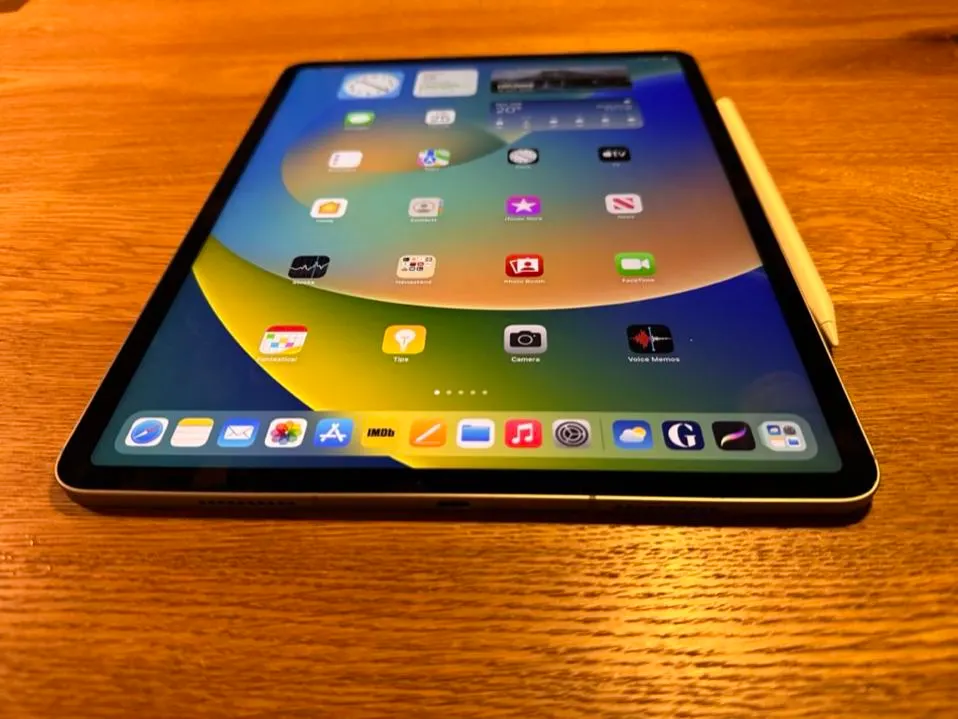Steering through the landscape of 2023, the iPad Pro emerges as a third-tier contender among Apple’s networked personal computing devices, carving out a unique and somewhat intricate niche. Undoubtedly, its impressive capabilities take center stage – emanating power and responsiveness, most iterations proudly showcase stunning screens, complemented by an unquestionably user-friendly interface. Yet, a paradox prevails – it stands as both remarkable and yearning for more. While it continues to reign supreme in the tablet domain, sales have experienced a decline since 2020, a trend that Mark Gurman’s recent Bloomberg article aptly underscores. In essence, the iPad Pro thirsts for evolution.
Personal Connection: My Journey with the iPad Pro
Allow me to share my personal vantage point – my 2021 iPad Pro has seamlessly woven itself into my technological repertoire. Serving as an enchanting companion during leisurely reading, a steadfast source of entertainment during bedtime TV escapades, and an indispensable aid while navigating culinary instructions, its value is undeniable. However, as I reflect upon the moment Steve Jobs unveiled the iPad in 2010, underscoring its superiority over iPhones and laptops for tasks like emails, web browsing, videos, and games, a question arises: Was it primarily envisioned as a sophisticated recipe repository?
In many respects, a prevailing sentiment emerges – the iPad should offer more, especially considering the 13-year journey since its inception. While its allure beckons engagement, its usage often leaves a subtle yearning for more – a sentiment underscored by the awareness that many tasks I perform on the iPad could be executed more efficiently on alternative devices.
The Identity Conundrum: Navigating the iPad’s Purpose
At the core of the matter, I find Apple’s stance toward the iPad to be equivocal. On one hand, the company treats it as a mature product, yet on the other, an air of uncertainty shrouds its true essence. Jason Snell’s recent article on his Six Colors blog resonates with this perspective. His decision to abandon the notion of relying solely on an iPad for travel vividly outlines the device’s limitations – constrained flexibility, peculiar app adaptations, and the conspicuous absence of crucial software. This deeply resonates with me as someone who habitually includes an iPad in my travel arsenal. Surprisingly, during my recent voyages, I opted for my M2 MacBook Air and found myself untouched by any sense of longing for my tablet.
Although Apple has certainly dedicated efforts spanning over a decade to augment the iPad’s capabilities, the results often fall short. Multitasking capabilities akin to laptops? To a certain extent, yes. However, even with the anticipated enhancements in iPadOS 17, the Stage Manager feature remains fettered by limitations on the number of apps capable of coexisting within a “stage.” The introduction of M-series laptop chips into select iPads was undoubtedly a commendable stride, but the tangible impact often falls short of justifying the additional power. Across the years, other advancements have sometimes carried the flavor of incremental progress at best.
A Glimpse into the Future: Eagerly Awaiting Innovation
Perhaps winds of change are gently stirring. As per Mark Gurman’s insightful analysis within his Bloomberg Power On newsletter, Apple stands on the threshold of introducing a marginally larger 13-inch iPad Pro, boasting resplendent OLED screens and M3 chips. This anticipated shift is poised to be complemented by the debut of a revitalized Magic Keyboard, now featuring an expanded trackpad, slated for unveiling in the forthcoming year.
Could this be a prelude to a loftier destiny for the iPad? Contemplating the iPhone Pro and the Apple Watch, both adorned with OLED screens and ever-present displays, a thematic thread emerges. Furthermore, the intriguing parallel between the iPhone Pro’s StandBy feature – a transformation into a smart display or alarm clock – and rumors hinting at a similar capability for the iPad, alludes to the iPad potentially metamorphosing into a touchscreen control hub for the Apple Home ecosystem.
While Gurman’s article alludes to the prospect of a “first major overhaul” of the iPad Pro since the 2018 introduction of its predecessor, a veil of ambiguity persists. Nonetheless, optimism prevails that this impending transformation will transcend mere technical specifications. The prevailing narrative paints a picture of Apple’s other devices forging ahead, possibly leaving the iPad trailing behind.
In Conclusion: Paving the Path for Evolution
In summation, the iPad Pro occupies the threshold of transformation, a journey that transcends the realm of hardware upgrades. As we fervently anticipate this unfolding evolution, it becomes patently evident that the iPad’s voyage is far from reaching its culmination. In a swiftly evolving technological landscape, the call is for a renewed identity – one that ushers in innovation finely tuned to user needs, whilst seamlessly transcending preset conventions. In realizing this vision, the iPad Pro is poised to entrench itself as an indispensable companion, intricately woven into the tapestry of our interconnected lives.
